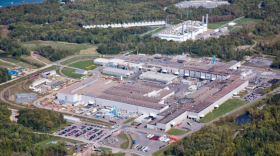When Republican presidential candidate Donald Trump suggested recently that the U.S. should block Muslims from entering the country over fears of terrorism, he cited former President Franklin Roosevelt's infamous decision to place some Japanese citizens into internment camps following the attacks on Pearl Harbor. But, FDR also opened a different kind of camp in Oswego in spite of the anti-immigration sentiment from Congress at the time.
In August of 1944, Jews were fleeing death. The refugees were seeking an escape from Nazi-occupied territory, but Congress wouldn't open the door to the country.
"There was a great deal of anti-Semitism, even within the United States," said George Demass, president of the Safe Haven Holocaust Refugee Museum board in Oswego. The site is applying for National Park status because of the unique role it played during world war two.
Mirroring the divide between the executive and legislative branches today on whether and how to accept refugees, FDR went against the will of Congress by opening Fort Ontario to 986 Jewish refugees. Demass says the president invited the "cream of the crop" - lawyers, physicians and artists -- as his guests through an application process.
According to Demass, Oswego was chosen because FDR previously campaigned in the Port City.
"He liked it up here on Lake Ontario and he thought small town America would be a good place for the refugees to reside and thus, it was," Demass said.
The refugees were kept from the public for a few months as they were screened for disease and to ensure there wasn't a backlash from the community. However, Demass said Oswego's reception of the refugees was warm.
"There was a great group of what we call the neighbors, people of Oswego who truly welcomed them and even invited them into their homes for thanksgiving dinner," Demass said.
Demass said what happened in Oswego should be an example to lawmakers. He said human nature hasn't changed much between the debates over Jewish refugees in the 1940s and Muslim ones today.
"It’s the fears of the unknown. people who we think are different from us, not only in ethnicity, but in religion as well," Demass said.
Demass hopes the country takes in more middle eastern refugees. In the meantime, he is working on the effort to make the museum a UNESCO World Heritage Site and a $5 million campaign to make the site an institute for refugee studies.








